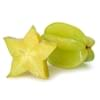Health Benefits
Arthritis treatment, Cholera treatment, Gout treatment, Heart care, Piles treatment, Scurvy treatment
Cancer prevention, Heart care, Increase in haemoglobin, Regulates Blood Sugar, Ulcer prevention
General Benefits
Cures fever, Digestive aid, Eye care, Maintains healthy cholesterol level, Treatment of common cold
Boosts immune system, Digestive aid, Fights against infections, Strengthens bones
Skin Benefits
Anti-aging benefits, Skin rejuvenation, Treatment of acne, Treatment of dark spots
Brightens and lightens complexion, Skin cleansing, Skin rejuvenation, Treatment of acne, Treatment of dark spots
Hair Benefits
Promotes longer and healthier hair, Treatment of dandruff
Promotes longer and healthier hair, Protects hair
Allergy Symptoms
Breathing difficulty, Coughing, Eye irritation, Hives, Inflammation, Nasal congestion, Runny nose, Skin rash, Wheezing
Abdominal pains, NA
Side Effects
Chances of sunburn
Decrease in blood sugar levels, Allergic reaction, Throat irritation, Throat swelling, Possibly unsafe during pregnancy
Best Time to Eat
Along with meal, Best to drink warm water with lime on an empty stomach, Don't consume at night and before bed
As a snack in the late afternoon, Don't consume at night and before bed, Eat the fresh ones, avoid mixing with any other foods, don't eat after meal., Morning time (before lunch), Strictly avoid empty stomach
Vitamin B5 (Pantothenic Acid)
Not Available
Vitamin B9 (Folic acid)
Not Available
Vitamin C (Ascorbic Acid)
Vitamin E (Tocopherole)
Not Available
Vitamin K (Phyllochinone)
Not Available
Lutein+Zeaxanthin
Not Available
Phytosterol
Not Available
Calories in Fresh Fruit with Peel
Not Available
Calories in Fresh Fruit without Peel
Not Available
Calories in Frozen Form
Not Available
Not Available
Calories in Dried Form
Not Available
Not Available
Calories in Canned Form
Not Available
Type
Citrus, Tree fruit
Tree fruit, Tropical
Season
All seasons
Monsoon, Summer
Varieties
Key lime, Persian lime, Kaffir lime, Desert lime, Palestine Sweet Lime, Mexican Sweet Lime, Mary Ellen Sweet Lime
Ram Jarnun and Paras
Color
Green
Black, Magenta, Purple
Inside Color
Light Green
Purple
Taste
Acidic, Sour
Astringent, Sweet
Origin
India
Bangladesh, India, Indonesia, Malaysia, Nepal, Pakistan, Philippines, Sri Lanka
Soil Type
Clay loam, Sandy loam
Loam, Sandy loam, Well-drained
Climatic Conditions
Sunny, Warm to hot climate
Humid, Rainfall
Facts about
- Lime is the called as the powerhouse of flavors.
- Fresh lime juice is so acidic that it can dissolve concrete.
- Limes are more fragrant and acidic than lemons.
- Persian limes are almost seedless and thorn less.
- Wood of jambul tree is water-resistant wood & is used in railroads and to implement engines in the well.
- In Indian mythology, it is said that Jambul fruit was revered by Buddha.
- Jambul has a huge importance in Ayurveda.
Other Countries
Argentina, Brazil, India, Mexico
Bangladesh, Indonesia, Malaysia, Nepal, Pakistan, Philippines, Sri Lanka
Top Importer
United States of America
Not Available
Top Exporter
Mexico
India
Botanical Name
Citrus aurantifolia
Syzygium cumini
Synonym
not available
Eugenia cumini
Subkingdom
Tracheobionta
Tracheobionta
Division
Magnoliophyta
Magnoliophyta
Class
Magnoliopsida
Magnoliopsida
Order
Sapindales
Myrtales
Family
Rutaceae
Myrtaceae
Species
C. aurantifolia
S. cumini
Generic Group
Citrus fruit
Not Available
Difference Between Lime and Jambul
We might think that Lime and Jambul are similar with respect to nutritional value and health benefits. But the nutrient content of both fruits is different. Lime and Jambul Facts such as their taste, shape, color, and size are also distinct. The difference between Lime and Jambul is explained here.
The amount of calories in 100 gm of fresh Lime and Jambul with peel is Not Available and 60.00 kcal and the amount of calories without peel is 30.00 kcal and Not Available respectively. Thus, Lime and Jambul belong to Low Calorie Fruits and Low Calorie Fruits category.These fruits might or might not differ with respect to their scientific classification. The order of Lime and Jambul is Sapindales and Myrtales respectively. Lime belongs to Rutaceae family and Jambul belongs to Myrtaceae family. Lime belongs to Citrus genus of C. aurantifolia species and Jambul belongs to Syzygium genus of S. cumini species. Beings plants, both fruits belong to Plantae Kingdom.









